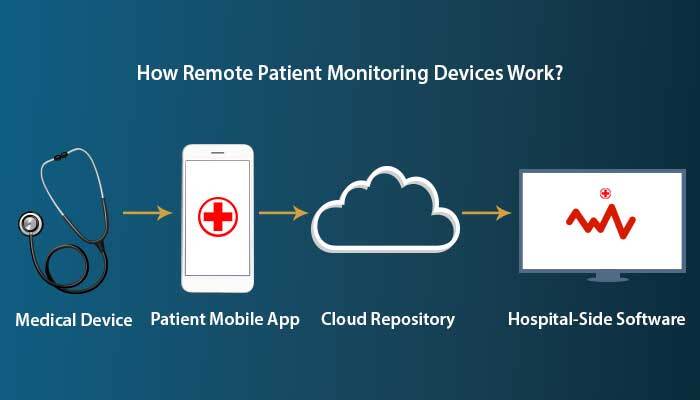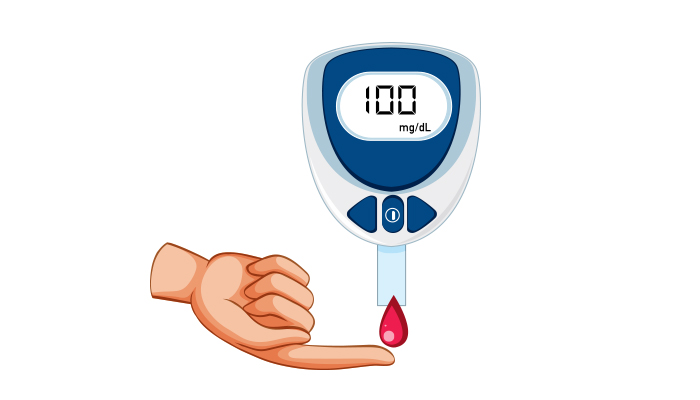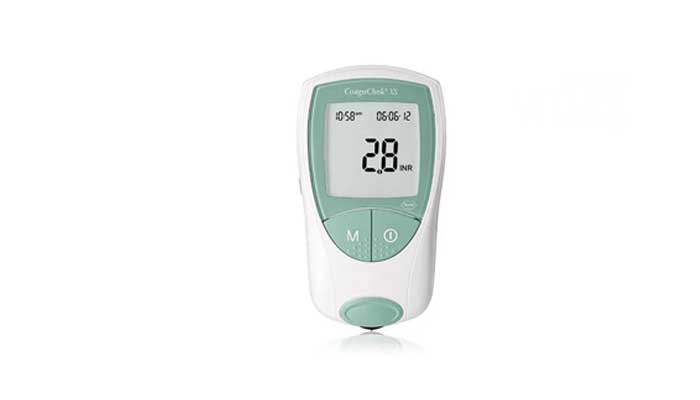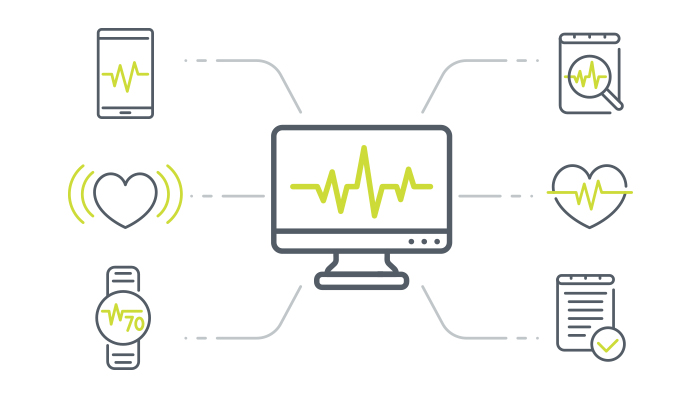Remote patient monitoring (RPM) devices in healthcare allow providers to monitor and analyze their patient’s acute or chronic conditions from outside the hospital or clinic setting. They allow providers to have real-time awareness of a patient’s condition, allowing them to make proactive treatment decisions.
Patients can use remote patient monitoring devices to engage with and better understand their health on a daily basis. Patients who use RPM devices to engage with their health are more likely to have long-term good health outcomes.
How Remote Patient Monitoring Devices Work?

To deliver information between patients and physicians, remote patient monitoring devices use digital technology. At various intervals during the day, patients monitor themselves to collect data about their health, then electronically submit secure data via messages to their clinicians or technicians.
The information is then evaluated by medical professionals in their primary care clinics, hospitals, intensive care units, nursing homes, or off-site monitoring centers. They can also provide much-needed information that treatment is working, timely notifications to change medicines, or directions to go to the ER if necessary by constantly refining each treatment plan.
Remote Patient Monitoring Statistics
- According to Insider Intelligence, 23.4 million patients in the United States used remote patient monitoring services and tools in 2020.
- According to Insider Intelligence, RPM services & solutions are predicted to reach 30 million patients in the United States by 2024.
- The University of Pittsburgh Medical Center stated that providing patients with remote patient monitoring equipment and tablets increased patient satisfaction by over 90%.
- According to a survey conducted by MSI International in June 2021, 80 percent of Americans support the use of remote patient monitoring, with nearly half of those expressing strong support for adopting it into medical care.
- According to a 2020 American College of Physicians member poll, RPM technology is available in 24 percent of practices, which is lower than other technologies.
Remote Patient Monitoring Market
The global remote patient monitoring system market was valued at USD 1,282.0 million in 2021, with a compound annual growth rate (CAGR) of 20.2 percent predicted from 2022 to 2030.
The COVID-19 epidemic has had a major impact on the remote patient monitoring system. Remote monitoring systems promote chronic disease management by providing early warning indications and a progress tracker, resulting in increased demand in the coming years on a global scale.
Chronic diseases account for 90% of all healthcare costs in the United States each year. This can be avoided by providing prompt assistance to patients through the use of a remote monitoring system.
Types of Remote Patient Monitoring Devices in Healthcare
Blood Pressure Monitor

This simple inflatable cuff fills with air, squeezes your arm, and then uses differences in artery motion to compute the patient’s heart rate and blood flow as it deflates.
Certain blood pressure monitors collect many measurements to produce daily averages.
Early diagnosis of conditions that lead to high blood pressure, such as diabetes or renal impairment, can be aided by home monitoring.
Continuous Glucose Monitor

For effective diabetic care, continuous blood sugar monitoring is essential. A single drop of blood from your patient, which he or she analyses at home, can also help to:
- Monitor medication effects.
- Keep track of how your diet and activity impact your blood sugar levels.
- Keep track of your progress.
- Let both the patient and the provider know about the upcoming appointments.
Anticoagulation Testing Device

Patients with atrial fibrillation, prosthetic heart valves, deep vein thrombosis (DVT), or pulmonary embolism are prone to Thromboembolism.
Anticoagulants, like warfarin, have a restricted remedial window. They may conceivably collaborate with food high in vitamin K as well as different medications.
Higher doses may result in bruising. That’s exactly why these people need to have sugar levels tested regularly.
Anticoagulation testing equipment typically just requires one drop of blood and takes approximately a minute to get findings. Patients then email the information they’ve acquired to doctors and wait for advice on how to proceed with their treatment.
Electrocardiography (ECG) Devices

These gadgets, whether in handheld, wearable, or patch form, can aid in the detection of life-threatening disorders. The ECG can detect arrhythmia, myocardial ischemia, and ST depression symptoms, as well as cardiac chamber anomalies and drug toxicity.
Even during endurance or sports training, these remote patient monitoring devices record electric impulses from a patient’s heart and communicate them to a doctor in real-time.
Such readily available data can assist your team in making on-the-fly adjustments to care plans before a patient pushes their heart past its capacity.
Pulse Oximeter

The pulse oximeter is a harmless clasp that is joined to the patient’s finger to screen light frequencies that characterize blood oxygen level-how much oxygen is coursing in the red platelets. The beat oximeter additionally records the patient’s heartbeat.
Pulse oximeters are used to monitor patients with constant ailments like COPD or CHF, as well concerning COVID-19 screening & checking.
Low blood oxygen levels, for instance, are as often as a basic indicator of a positive conclusion in COVID-19 patients.
Wearables

Healthcare Providers can make use of activity trackers to monitor patients’ vitals like steps, heart rate, and even sleep.
Some wearables have a patch that allows for continuous patient monitoring. These wearables allow for continuous symptom and biometric monitoring of the patients resulting in better patient outcomes.
Conclusion
Remote patient monitoring devices in healthcare play a crucial role in providing quality care. It assists providers in performing their roles more efficiently, effectively, and data-driven.
RPM devices complement in-person care by allowing physicians to see patient’s symptoms throughout time rather than just during in-person visits. Moreover, remote patient monitoring technologies enable patients to take active role in their health and recognize changes in their status.
Patients enjoy the convenience and demand quality healthcare delivery at their doorsteps. Healthcare companies all around the world accept Remote monitoring devices by discovering the numerous advantages of RPM.

